
The silver-ground carpet is a moth of the family Geometridae. The species was first described by Michael Denis and Ignaz Schiffermüller in 1775. It is common throughout the Palearctic region including the Near East and North Africa.It is found in a variety of different habitats and occurs, for example, in humid forests, moorland and shore areas, on embankments or on unimproved grass meadows and heathlands as well as in gardens.
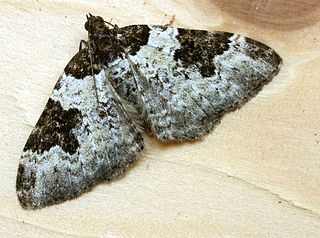
The garden carpet is a moth of the family Geometridae. It is an abundant and familiar species across its huge range which covers the whole Palearctic region from Ireland to Japan and including the Near East and North Africa. It was first described by Carl Linnaeus in his 1758 10th edition of Systema Naturae.
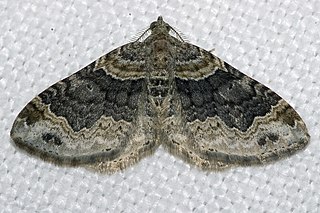
Xanthorhoe ferrugata, the dark-barred twin-spot carpet, is a moth of the genus Xanthorhoe in the family Geometridae. It was first described by Carl Alexander Clerck in 1759 and has a Holarctic distribution.
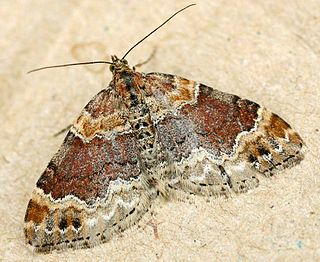
Xanthorhoe spadicearia, the red twin-spot carpet, is a moth of the genus Xanthorhoe in the family Geometridae. The species was first described by Michael Denis and Ignaz Schiffermüller in 1775.

Xanthorhoe designata, the flame carpet, is a moth of the genus Xanthorhoe in the family Geometridae. The species was first described by Johann Siegfried Hufnagel in 1767.

Xanthorhoe is a genus of moths of the family Geometridae described by Jacob Hübner in 1825.

Orthonama vittata, the oblique carpet, is a moth of the family Geometridae. The species was first described by Moritz Balthasar Borkhausen in 1794. It is found throughout the Palearctic realm.

Costaconvexa is a genus of moths in the family Geometridae first described by Ramón Agenjo Cecilia in 1949.

Orthonama is a genus of the geometer moth family (Geometridae). It belongs to the tribe Xanthorhoini of the "carpet" subfamily (Larentiinae). Nycterosea is usually included here by modern authors, but may in fact be distinct enough to warrant recognition as an independent genus. The genus was erected by Jacob Hübner in 1825.

Xanthorhoe decoloraria, the red carpet, is a moth of the family Geometridae. The species was first described by Eugenius Johann Christoph Esper in 1806 and it is found in northern Europe, to the east across the Palearctic to Siberia and the north of North America; further south it seems to occur chiefly, if not exclusively, in the mountains.
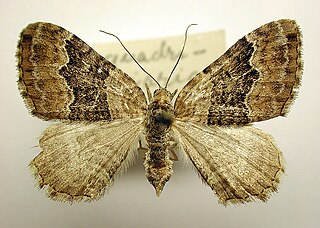
Xanthorhoe quadrifasiata, the large twin-spot carpet, is a moth of the family Geometridae. It is found in most of Europe, east to the Near East and the eastern part of the Palearctic realm.
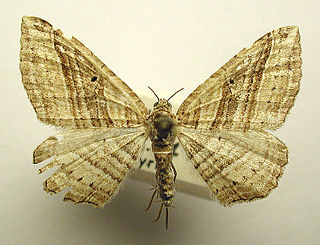
Costaconvexa polygrammata, the many-lined moth, is a moth of the family Geometridae. The species was first described by Moritz Balthasar Borkhausen in 1794. It is found from Europe to North Africa.













